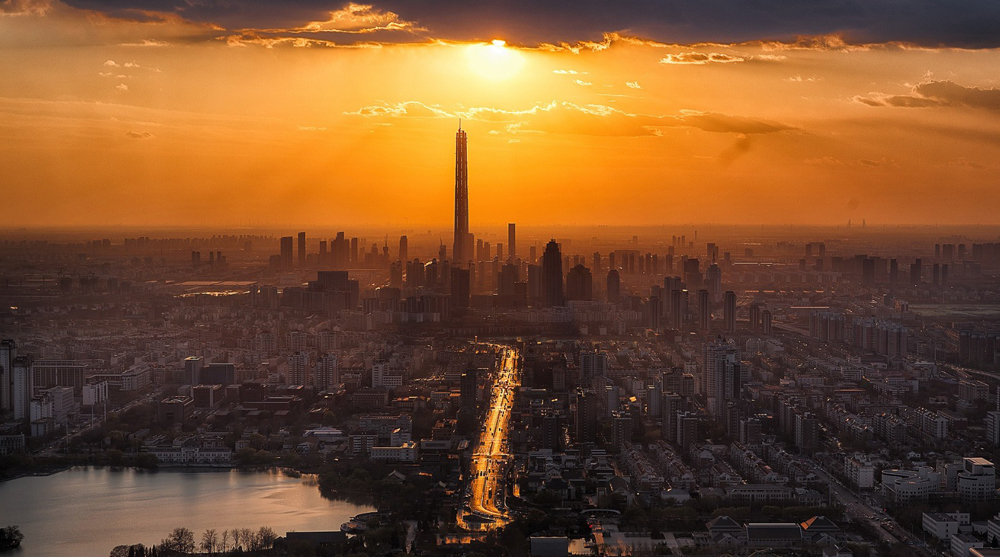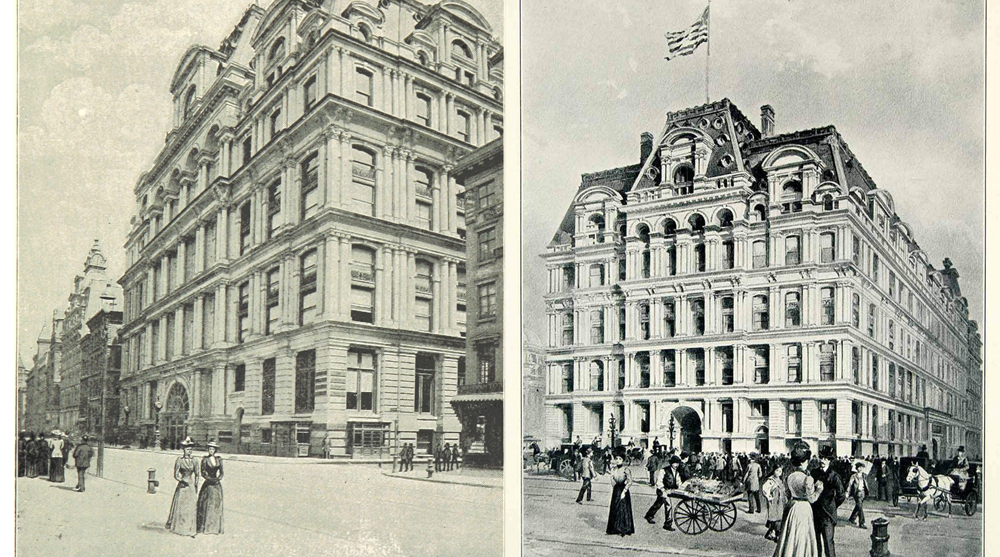Skyscrapers are a common sight these days, with taller and taller buildings reaching towards the sky in order to impress potential tenants, clients, and grab themselves titles, awards and headlines. But what was the first building to tower above the crowd, and why was that design so revolutionary?

The technology of the first skyscrapers
The debate rages on about which building can claim the title of the world’s first skyscraper, however there is some consensus about the typical characteristics required in order to be classed as a skyscraper. In addition to being significantly taller than other buildings typical of the area, skyscrapers tend to have certain architectural and technological features.
This tends to include a steel skeleton, an elevator, wind bracing, anchoring, fireproofing, heating, cooling, ventilation, plumbing, lighting, and electrical wiring to support the larger building size. While those are features that you would expect to see in every building nowadays, this was not the case back in the 1870s and 1880s when the world’s first skyscrapers began to emerge above the city skyline.
What was the world’s first skyscraper?
There is some debate as to which building should have the title of the world’s first skyscraper. There’s no official universal definition of what constitutes a skyscraper, no given height, number of storeys, or required features or materials.
The most popular choice for the title of “world’s first skyscraper” is the Home Insurance Building that was built in Chicago in 1885. Not only was the building taller and more imposing than any that had appeared in cities before then, but it incorporated new technology that would evolve to become a core architectural concept to building tall structures, namely the use of an iron frame.
Home Insurance Building (1885), Chicago

The Home Insurance Building in Chicago is thought to be the world’s first skyscraper. Image source
The Home Insurance Building in Chicago was designed by Major William LeBaron Jenney who was an engineer by training and attended École Centrale Paris with Gustave Eiffel. It’s not a great surprise then that the architectural revolution of the Home Insurance Building was the inclusion of an internal iron frame that is reminiscent of Eiffel’s self-titled tower in Paris.
When the New York-based Home Insurance Company were looking for a new Chicago headquarters in the downtown region cleared out by the recent devastating city-wide fires, they had a few key requirements: it should be fireproof and tall. The company held an open architecture competition and selected Jenney’s metal-framed design for its ability to provide both.
The introduction of an iron frame - that would later be replaced by steel - meant that the skyscraper would weigh approximately one-third as much as it would if it had been built entirely in stone. Therefore, the skyscraper could be designed taller without having to be thicker, darker, or stuffier.
Unfortunately, the Home Insurance Building was demolished in 1931, which was ironically, the year that The Empire State Building was completed in New York.
The Equitable Life Assurance Society Building (1870), New York

The Equitable Life Assurance Society Building (1870), New York. Image source
Beating the Home Insurance building to new heights by a good 15 years, the Equitable Life Assurance Society Buildings in New York was completed in 1970. The 7-storey structure featured the revolutionary technology of two steam-powered elevators in order to access the higher floors. This was also the first time in history that tenants paid higher rents in order to lease higher floors, taking full advantage of the prestige that came with the novelty of office space with a view.
Sarah Bradford Landau and Carl W. Condit place their votes for the Manhattan property to take the title of “world’s first skyscraper”, stating the following in their book “Rise of the New York Skyscraper: 1865-1913”
“All the exceptional features of the Equitable Building—its elevator-predicated height, “fireproof” constructions, extensive iron framing, large window area, and rent-free owners quarters—justify the title “first skyscraper.”
SKYHIVE - The Annual Buildner Skyscraper Challenge
Just like these buildings revolutionised and redefined the skyline, the winning designs from this year’s SKYHIVE Challenge have the potential to change it again.
Enter the SKYHIVE Challenge annual architecture competition to redefine the modern-day skyscraper. The jury will be looking for innovations in design, aesthetics, sustainability, and technology in order to create a structure that stands out amidst the world’s gleaming skylines.
Participants may select any location in any city around the world this competition. They are then tasked with creating designs for an iconic new high rise structure, one that not only pushes the boundaries of technology and design, but one that works to improve the city it will call home.
Top 3 Reasons Why You Should Enter Architecture Competitions
Curious about the value of architecture competitions? Discover the transformative power they can have on your career - from igniting creativity and turning designs into reality, to gaining international recognition.
Learn more



























